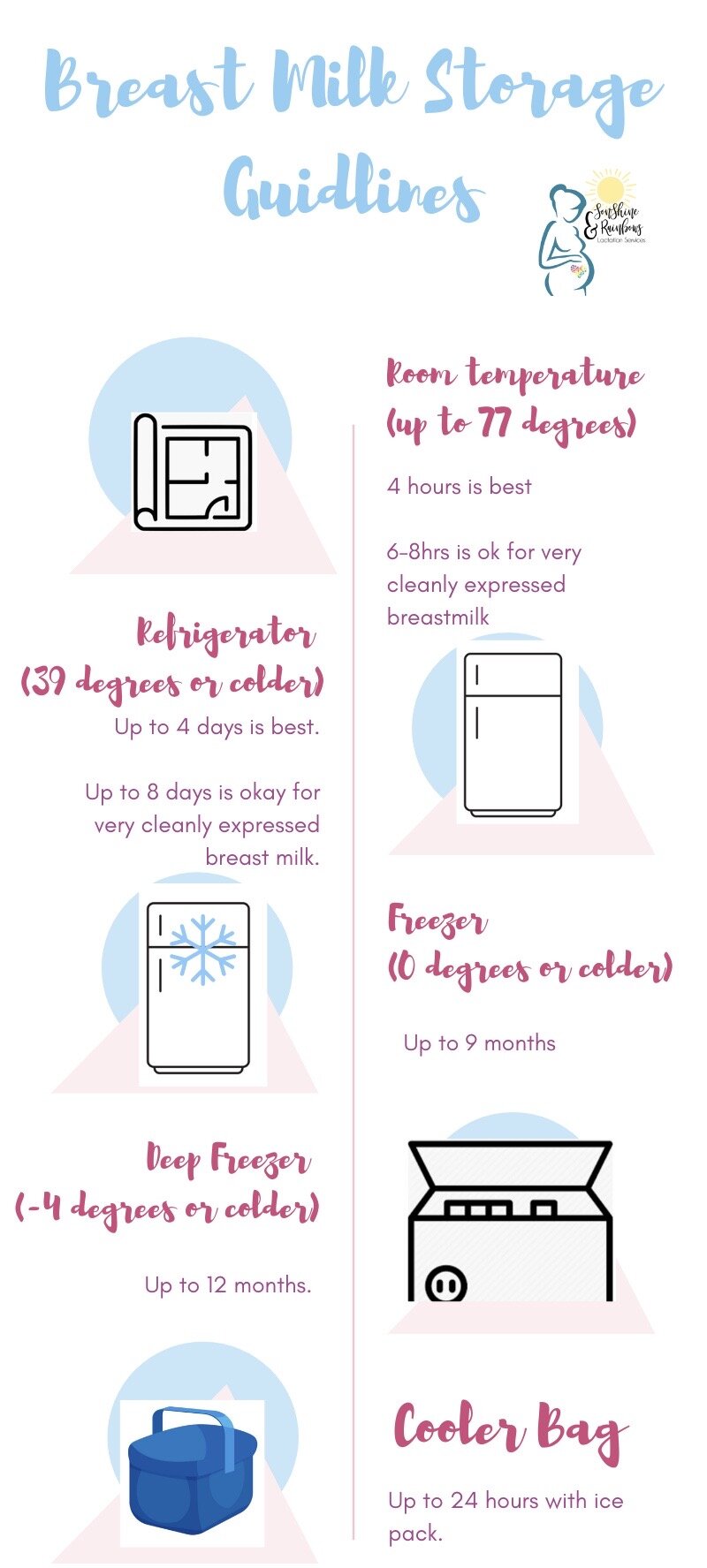I think milk storage comes so naturally to me because as an Exclusively Pumping mom, I had to figure that out before I began breastfeeding. In the beginning, it was relatively easy because all my milk was going in my SonShine’s belly. But, as the weeks progressed, and I could bank an extra oz or 2 a day, milk storage became the bane of my breastfeeding existence. For moms who don’t or didn’t have that experience, milk storage begins as this dragon. So, how DO you navigate the beast that is storing your precious liquid gold so that you maximize space, cost, time, and don’t waste any?
**I want to preface this post by saying, some people never freeze a milliliter of breastmilk. You don’t need a freezer or deep freezer full of milk to be successful at breastfeeding. All you need is to define your OWN level of success, be that one day or one year.**
To demystify breast milk storage, we must first start with the basics. According to the American Academy of Pediatrics, breastmilk can be stored 6-8 hours at room temperature (up to 77 degrees), 8 days in the refrigerator (39 degrees or colder), 6-9 months in a freezer (0 degrees or colder), and 12 months in a deep freezer (-4 degrees or colder).
A lot of the confusion comes because this doesn’t tell you about transitions. Transitions could be from work fridge to home to home freezer. From the night stand to fridge and back out. Or from a freezer to a deep freezer and when these timelines begin.
Transitions
When transporting milk from work, school, or being away from baby, it is still good at room temperature for 6-8hrs. If utilizing a cooler bag with ice packs, the milk is still good inside that cooler pack with the ice pack for 24hrs.
You don’t need to put it on ice to transport from work/school to home, as long as you refrigerate it within 6-8hrs (8hrs would be pushing it). When transitioning milk from the fridge to the freezer or deep freezer, the date it was expressed is the date that goes on the bag/container. And that date begins the “timer” for how long that milk is good for consumption.
If you have milk in a freezer and decide to move it to a deep freezer, the timeline is still based off that original date. For example, if I pumped a bag of milk on October 10, 2019 and placed it in the freezer on October 15, 2019, that milk is good in the freezer until July, 10, 2020 (9 months). If I decide on January 10, 2020 to move that milk to the deep freezer after it was in the freezer for 3 months, it’s now good until October 10, 2020).
Labeling
When labeling milk that will be for the refrigerator and used within those 8 days, you can use a piece of tape and pen on the bottle or one of those liquid chalkboard pens (think Starbucks or a coffee shop). This can be milk used for daycare or when mom is away/running errands or a date night that’s coming up. You want to insure that you’re freezing milk before you hit that 8 day mark.
If/once you decide to transition your breastmilk to more long term storage (freezer/deep freezer), you want to ensure that your milk is labeled with the day it was pumped. Because that’s when its freshness timer starts.
Containers
People store in many different kinds of containers: bags, bottles, glass bottles, 1oz cubes. However you choose to store, ensure it works for your family and is something that's sustainable. I initially thought the storing in 1oz ice cubes and tossing in a freezer bag would work for my family, until I realized how much space they took up and that freezer bags are not sterile (breastmilk storage bags are sterile).
Volume
I think this is the biggest concern I see. “HOW MUCH MILK SHOULD I PUT IN THIS THING?” Most bags go up to 6oz. But, filling a bag to capacity and then freezing it takes the bag past its capacity. The milk storage bag can tear, and you won’t know until you go to defrost the milk.
I always advise not to store in larger than 4-5 ounce increments. With the average breastfed baby taking a maximum of 4-5oz per feeding during their entire breastfeeding journey, a 4-5oz bang can be an entire feed or two. If there’s a leftover ounce or two from that bag, simply place in the refrigerator for the next feed. If you’re not going to use it any time soon, consider saving for external uses (milk baths, lotion, conditioner, etc).
Many moms have to store milk for some reason or another. Maybe they work or are a full time student. Maybe they stay at home and get the amazing opportunity to run to the Mom Spa… errr… I mean Target alone. Breastmilk storage doesn't have to be this big scary beast or anxiety inducing… thing! Hopefully, these tips help in taking one more thing off your plate!
